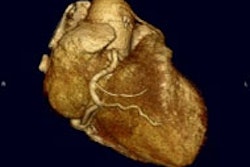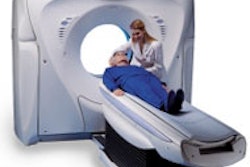A Siemens CT highlight will be Speed4D, an upgrade package introduced in October that includes a new x-ray tube, workflow and data-handling protocols, and dose-reduction techniques. At the heart of Speed4D is Straton, a new CT x-ray tube that enables a gantry rotation speed of 0.37 seconds for both cardiac and whole-body applications.
Straton also features a design in which the tube’s bearings are located outside the anode, enabling it to be cooled directly. This results in a tube-cooling rate of 5 million heat units (MHU) per minute, which reduces the need for CT tubes with large heat-storage capacities, according to the company.
Siemens claims that its WorkStream4D software eliminates the need for manual image reconstruction steps: users can identify the image planes needed for reconstruction, with the software handling the rest at reconstruction speeds of up to 10 images per second in real-time mode and five images per second with full cone reconstruction.
WorkStream4D enables 4-D imaging of the heart, with double-oblique image data processed in a few minutes for up to 24 phases of the cardiac cycle, according to the company. Meanwhile, the software’s 3-D reconstruction capabilities enable the processing of up to 2,000 high-resolution 2-D slices into a single image, helping radiologists manage the flood of data produced by multislice scanners.
On the radiation dose management side, Speed4D includes an enhanced version of the German company’s CARE (Combined Applications to Reduce Exposure) package. CARE Dose4D analyzes the cross-sectional anatomy of each patient in real time, and adjusts the x-ray dose accordingly. The technique does not require user interaction or an additional topogram to determine patient attenuation, according to the company. Siemens said that initial clinical experience with CARE Dose4D indicates that it may be able to reduce radiation dose by up to 66%.




















